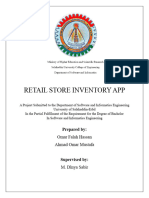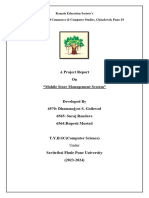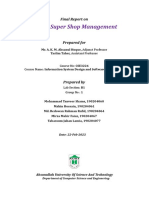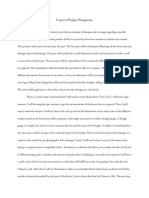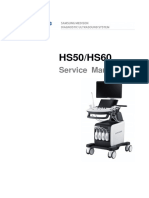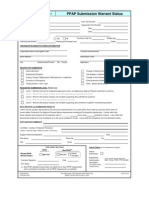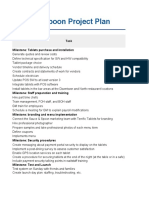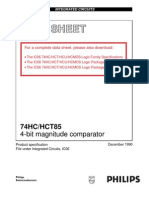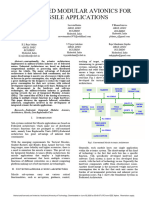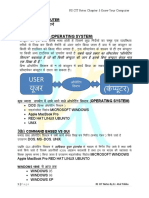0% found this document useful (0 votes)
48 views3 pagesStore Management System Project Report
The Store Management System (SMS) is designed to automate retail operations, including inventory management, sales tracking, and customer data handling, to reduce errors and enhance productivity. The system will utilize an Agile methodology for development and is targeted at small to medium-sized retail stores. Key features include real-time sales monitoring, efficient billing, and accurate data management, with a focus on improving overall operational efficiency.
Uploaded by
irfanwattoojodhekaCopyright
© © All Rights Reserved
We take content rights seriously. If you suspect this is your content, claim it here.
Available Formats
Download as DOCX, PDF, TXT or read online on Scribd
0% found this document useful (0 votes)
48 views3 pagesStore Management System Project Report
The Store Management System (SMS) is designed to automate retail operations, including inventory management, sales tracking, and customer data handling, to reduce errors and enhance productivity. The system will utilize an Agile methodology for development and is targeted at small to medium-sized retail stores. Key features include real-time sales monitoring, efficient billing, and accurate data management, with a focus on improving overall operational efficiency.
Uploaded by
irfanwattoojodhekaCopyright
© © All Rights Reserved
We take content rights seriously. If you suspect this is your content, claim it here.
Available Formats
Download as DOCX, PDF, TXT or read online on Scribd
/ 3

















